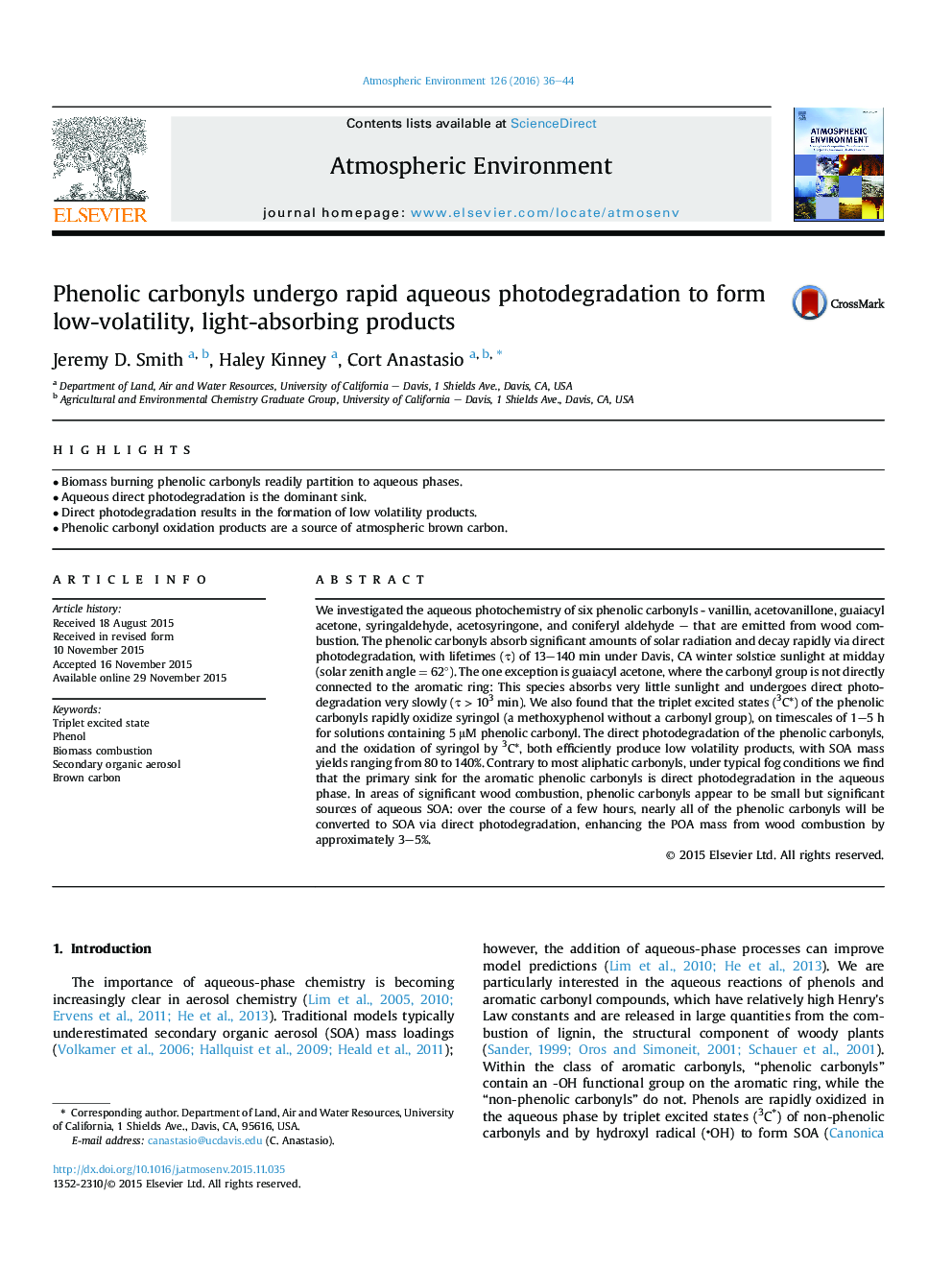| Article ID | Journal | Published Year | Pages | File Type |
|---|---|---|---|---|
| 6337155 | Atmospheric Environment | 2016 | 9 Pages |
Abstract
We investigated the aqueous photochemistry of six phenolic carbonyls - vanillin, acetovanillone, guaiacyl acetone, syringaldehyde, acetosyringone, and coniferyl aldehyde - that are emitted from wood combustion. The phenolic carbonyls absorb significant amounts of solar radiation and decay rapidly via direct photodegradation, with lifetimes (Ï) of 13-140 min under Davis, CA winter solstice sunlight at midday (solar zenith angle = 62°). The one exception is guaiacyl acetone, where the carbonyl group is not directly connected to the aromatic ring: This species absorbs very little sunlight and undergoes direct photodegradation very slowly (Ï > 103 min). We also found that the triplet excited states (3C*) of the phenolic carbonyls rapidly oxidize syringol (a methoxyphenol without a carbonyl group), on timescales of 1-5 h for solutions containing 5 μM phenolic carbonyl. The direct photodegradation of the phenolic carbonyls, and the oxidation of syringol by 3C*, both efficiently produce low volatility products, with SOA mass yields ranging from 80 to 140%. Contrary to most aliphatic carbonyls, under typical fog conditions we find that the primary sink for the aromatic phenolic carbonyls is direct photodegradation in the aqueous phase. In areas of significant wood combustion, phenolic carbonyls appear to be small but significant sources of aqueous SOA: over the course of a few hours, nearly all of the phenolic carbonyls will be converted to SOA via direct photodegradation, enhancing the POA mass from wood combustion by approximately 3-5%.
Related Topics
Physical Sciences and Engineering
Earth and Planetary Sciences
Atmospheric Science
Authors
Jeremy D. Smith, Haley Kinney, Cort Anastasio,
